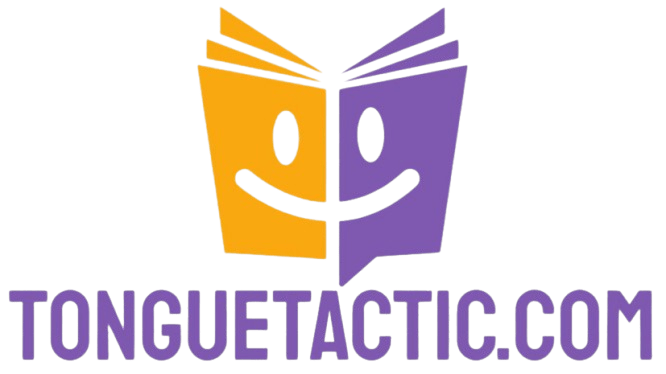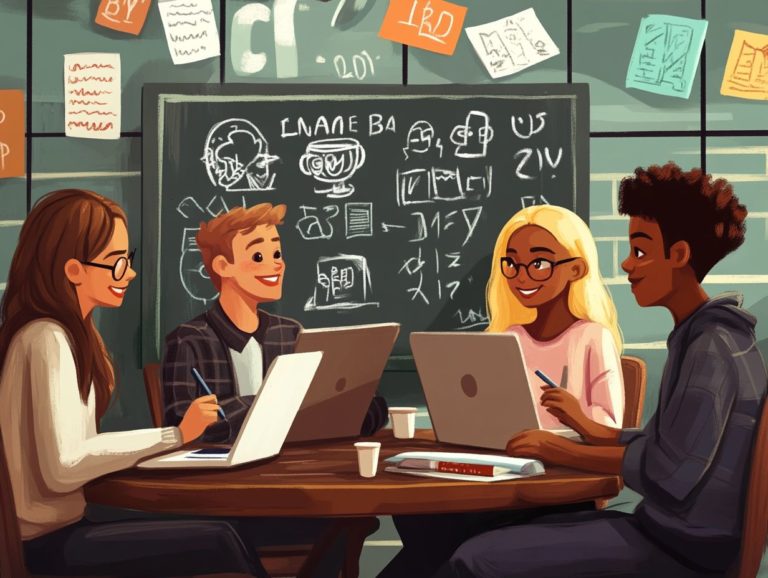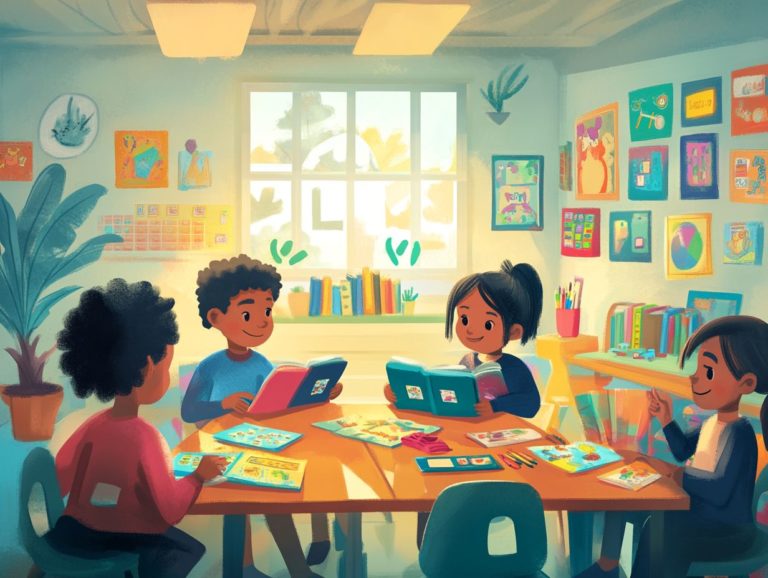benefits of using virtual reality in language learning
Virtual reality (VR) is revolutionizing language learning. It provides immersive experiences that surpass traditional methods.
By crafting engaging environments, VR elevates immersion and retention. This transforms language acquisition into an adventure rather than a tedious task.
This article delves into the benefits of utilizing VR for language learning. It offers insights on effective incorporation, discusses potential challenges, and speculates on the future of this innovative approach.
Discover how this technology can take your language learning to the next level!
Contents
- Key Takeaways:
- Benefits of Using Virtual Reality in Language Learning
- How to Incorporate Virtual Reality in Language Learning
- Potential Challenges and Solutions
- Future Outlook for Virtual Reality in Language Learning
- Frequently Asked Questions
- What are the benefits of using virtual reality in language learning?
- How does virtual reality improve language learning?
- Can virtual reality be used for all languages?
- What types of language skills can be developed through virtual reality?
- Are there any specific language learning programs that use virtual reality?
- Can virtual reality be used as a replacement for traditional language learning methods?
Key Takeaways:
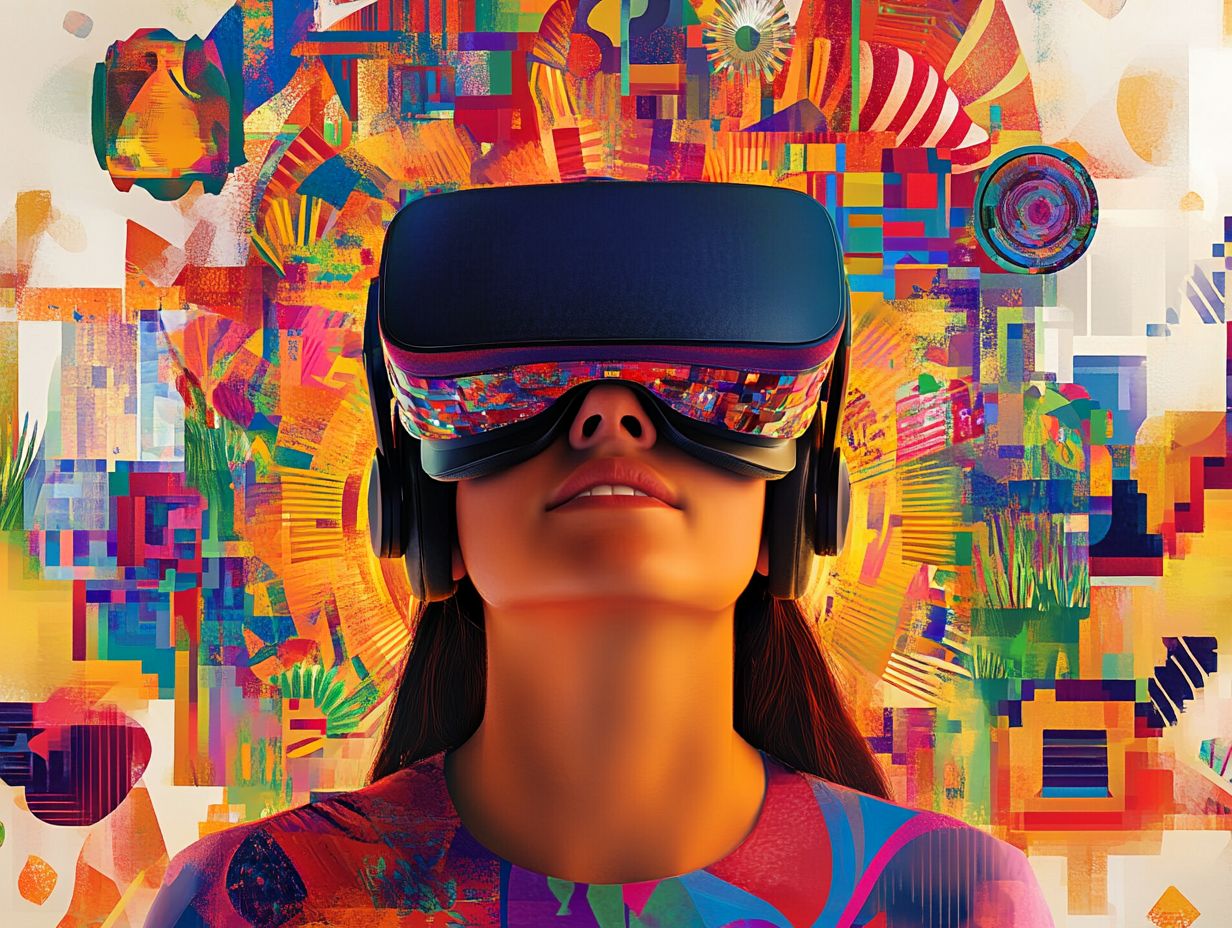
Experience language learning like never before with the immersive environment of virtual reality.
Retain and recall new language skills more effectively through interactive, multisensory experiences.
Practice language in real-world scenarios with VR simulations, offering practical application for real-world communication.
What is Virtual Reality and How is it Used in Language Learning?
Virtual reality (VR) is an innovative technology that creates immersive environments. It allows you to experience and interact with a computer-generated world.
In language learning, VR enhances your educational journey by fostering emotional engagement and helping you acquire real-world skills.
With VR applications, you can explore diverse cultural settings and historical events. This transforms language learning into an engaging and effective process.
This immersive experience redefines traditional study methods. It places you in realistic scenarios to practice your language skills in context.
For example, with tools like Google Cardboard, you can navigate virtual marketplaces in foreign cities. This builds your vocabulary and conversational skills in everyday situations.
Platforms like Nearpod offer interactive lessons. You can immerse yourself in simulations that boost cognitive development and retention.
These technologies create a dynamic learning environment and encourage collaboration among peers. Your language learning journey becomes a shared adventure in this digital age.
Benefits of Using Virtual Reality in Language Learning
Integrating virtual reality (VR) in language learning brings numerous benefits, showcasing the role of immersive technology in language learning. It can significantly elevate your educational experience.
By offering immersive learning environments, VR helps you connect emotionally with the material. This enhances retention and recall of the language you’re studying.
This technology fosters cultural competence and supports innovative teaching strategies tailored to your interests.
Enhanced Immersion and Engagement
Enhanced immersion and engagement are key benefits of using virtual reality for language learning immersion. It transforms traditional content into interactive experiences that captivate you.
By simulating real-world environments, VR technology gives you the power to practice language skills in context. This fosters emotional engagement and deeper cognitive connections.
Platforms like Second Life offer a virtual classroom. You can explore diverse cultures and navigate grocery stores or cafes all while using your target language.
Mondly’s immersive VR experiences allow you to converse with virtual characters. This reinforces your vocabulary and pronunciation.
These environments make learning enjoyable. They facilitate experiential learning, enabling you to apply your knowledge in meaningful ways that reflect real-life interactions.
Improved Retention and Recall
The use of Virtual Reality in language learning can significantly elevate your retention and recall of language concepts, showcasing the effectiveness of immersive language learning.
By engaging multiple senses in an immersive educational experience, you re far more likely to remember vocabulary and grammar structures than with traditional teaching methods.
Research demonstrates that VR applications enhance thinking skills by offering experiential learning opportunities that stimulate emotional and sensory responses.
A study by education leaders at Stanford University revealed that students who participated in lessons through VR experienced a remarkable 30% increase in memory retention compared to those using conventional methods.
Educators have shared testimonials illustrating how interactive scenarios like navigating foreign environments or conversing with virtual characters make learning more relevant and engaging for you.
This active participation fosters a deeper understanding of the material and leads to improved academic performance and greater confidence in your language skills.
Opportunities for Real-World Practice
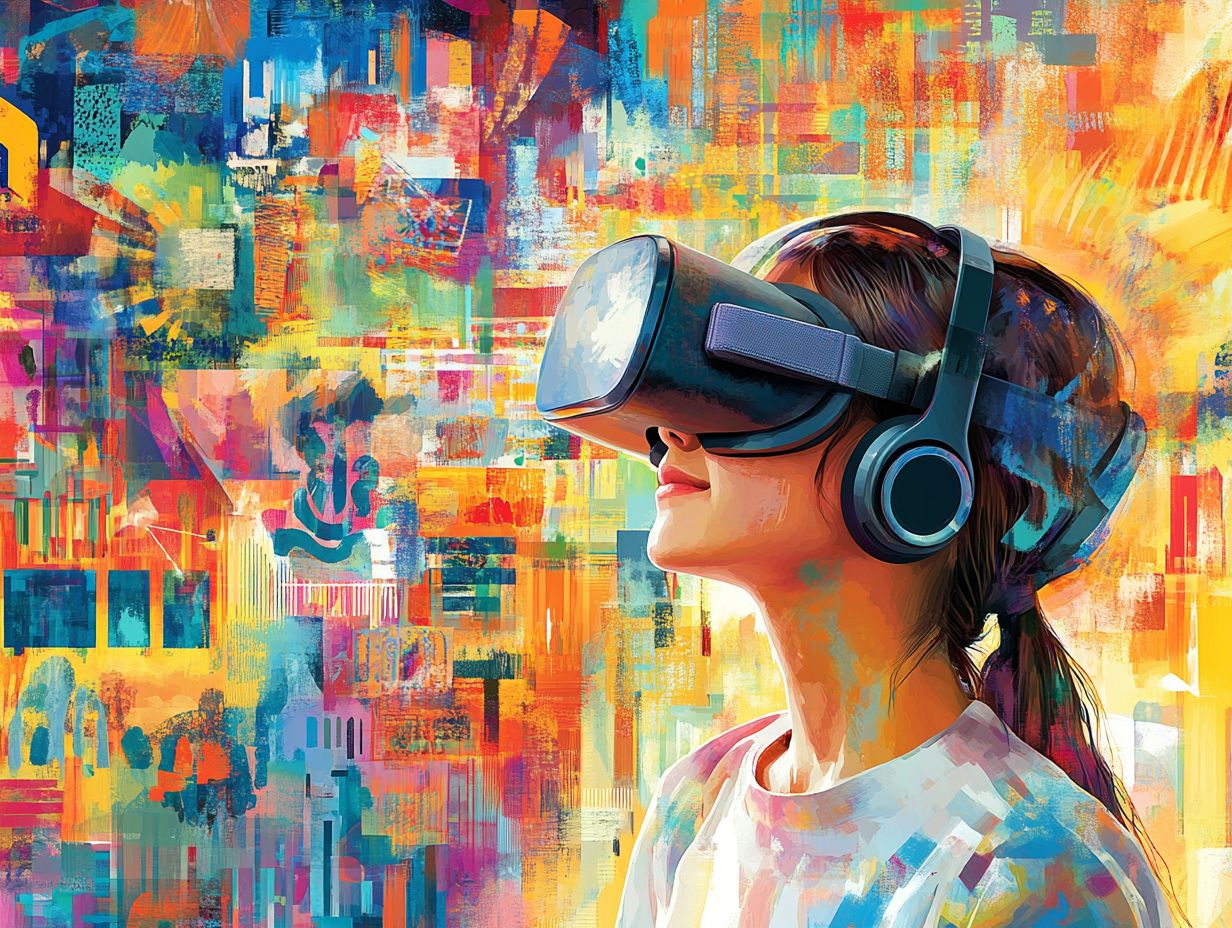
Virtual Reality offers you unparalleled opportunities for real-world practice in language learning.
It allows you to immerse yourself in authentic contexts and cultural experiences through virtual trips.
This immersive environment gives you the power to interact with native speakers or navigate real-life scenarios, significantly enhancing your language skills and cultural competence.
Imagine simulating conversations with virtual characters that embody various accents and dialects.
This experience allows you to refine your conversational abilities while building confidence.
Imagine exploring the Colosseum while practicing your language skills!
Exploring iconic landmarks not only provides a fascinating glimpse into history but also contextualizes relevant vocabulary and expressions.
These experiences enable you to apply your language knowledge in a setting that feels both safe and engaging.
Ultimately, these dynamic encounters are essential in bridging the gap between theoretical learning and practical application.
How to Incorporate Virtual Reality in Language Learning
Incorporating Virtual Reality into language learning demands strategic planning and the appropriate technological tools.
You should explore a variety of VR applications and platforms that align with your teaching objectives and foster interactive learning.
This thoughtful integration enriches the curriculum and engages students in ways traditional methods cannot.
Tools and Resources for Virtual Reality Language Learning
Numerous tools and resources are at your fingertips to seamlessly integrate Virtual Reality into language learning.
Platforms like Google Cardboard and Nearpod offer accessible avenues for crafting engaging educational content that aligns perfectly with your language learning objectives.
Beyond these, tools such as ClassVR and ENGAGE provide interactive experiences through 360-degree videos and virtual classrooms.
They enable you to immerse your students in diverse cultures and languages firsthand.
These immersive tools cater to a variety of learning styles, making it easy for you, as an educator or teacher candidate, to meet the needs of all your students.
By embracing VR technologies, you can significantly enhance motivation and retention.
Don’t miss out on the chance to elevate your language learning with VR today!
Potential Challenges and Solutions
While the benefits of incorporating Virtual Reality into language learning are substantial, you may encounter several challenges.
Factors such as technical difficulties, accessibility issues, cost implications, and safety concerns can impede the smooth integration of VR in educational settings.
Addressing these hurdles is essential for enhancing the effectiveness of your VR initiatives in language education.
Overcoming Technical Difficulties
Overcoming technical difficulties is crucial for successfully integrating Virtual Reality into language learning. Disruptions can significantly affect student engagement and learning outcomes. You must be prepared to tackle issues related to hardware malfunctions, software compatibility, and the ability to connect devices to the internet to ensure everything runs smoothly.
A step-by-step troubleshooting plan is important. Keeping an updated inventory of all your VR hardware and software allows you to quickly pinpoint compatibility issues. Regular maintenance checks can help prevent unexpected malfunctions that disrupt your plans.
Having technical support resources available helps resolve issues quickly. Access to manufacturer documentation and online forums gives you the tools needed to tackle challenges efficiently.
Adopting best practices, like conducting test runs before lessons and providing brief orientations for students, can minimize disruptions. Establishing a communication channel for students to report issues can enhance the overall learning experience.
Addressing Accessibility and Cost Concerns
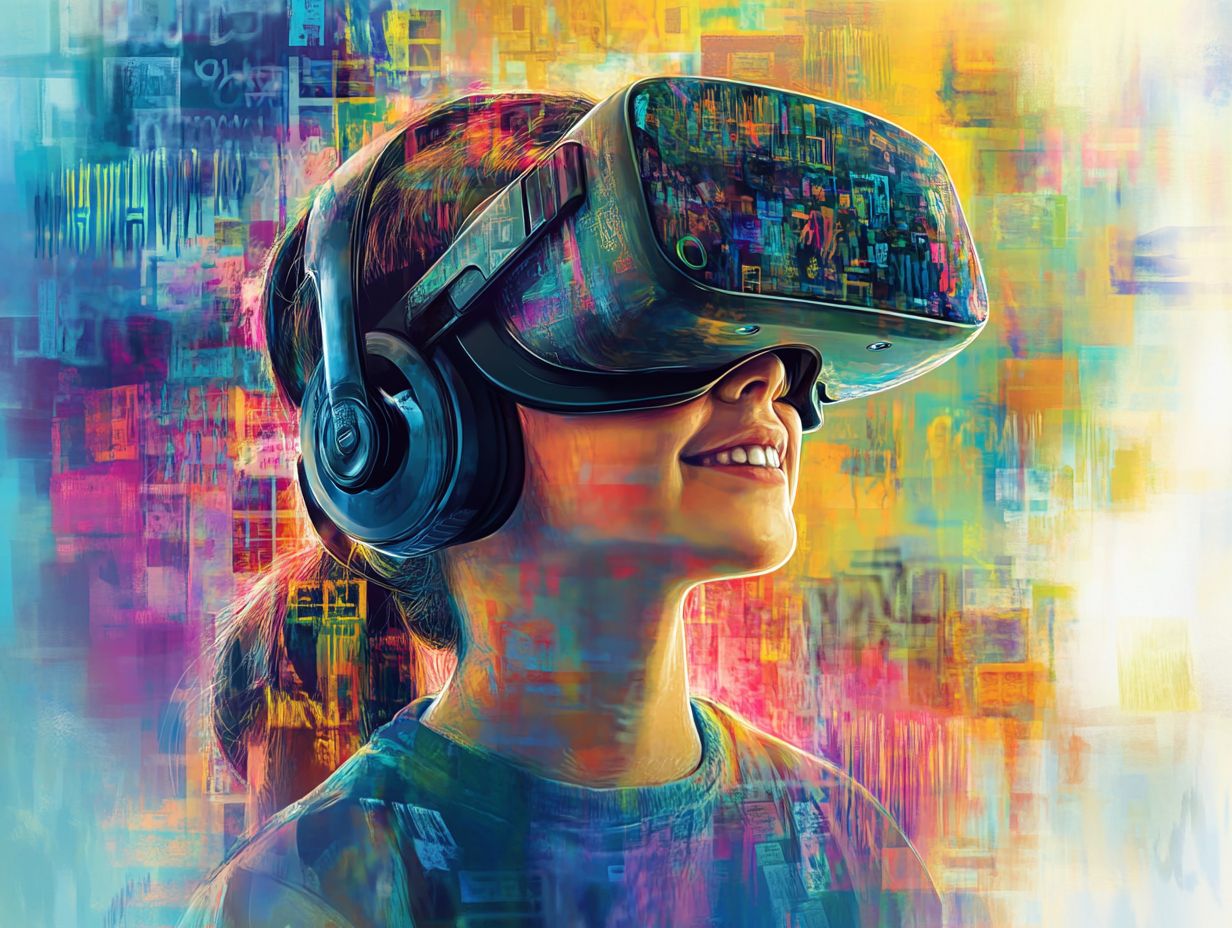
Addressing accessibility and cost concerns is essential for ensuring that all learners can fully benefit from integrating Virtual Reality into language learning. As innovative educators like yourself seek to harness this technology, it’s important to consider budgetary constraints and the varying levels of access to tech tools among students.
By exploring mobile VR solutions, you can provide immersive experiences without the hefty price tag typically associated with high-end equipment. Leveraging grants and funding opportunities can assist in acquiring the necessary resources, making it feasible for your school to implement these cutting-edge technologies.
Inclusivity is key; schools must actively work to bridge the technological divide for diverse student populations. This could mean offering training for educators to effectively use VR tools in their classrooms or forming collaborative partnerships with tech companies that specialize in affordable solutions tailored for various learning environments.
Future Outlook for Virtual Reality in Language Learning
The future of Virtual Reality in language learning is incredibly exciting! Advancements are poised to enhance its integration into educational systems.
As technology evolves, expect increasingly sophisticated VR applications that provide richer, more immersive environments, elevating the user experience for students to new heights.
Potential Advancements and Integration into Education Systems
Potential advancements in Virtual Reality technology may unlock the future of immersive education within modern educational frameworks. As VR tools become more accessible and user-friendly, you have the opportunity to implement innovative teaching strategies that elevate student engagement and foster active learning.
Consider the improvements in hardware lighter, wireless headsets and enhanced graphical capabilities that will create a seamless and comfortable experience for your learners. On the software side, sophisticated platforms featuring AI-driven language tutors (computers that teach languages using artificial intelligence) can provide personalized instruction tailored specifically to individual needs. With intuitive user interfaces, navigating these virtual environments will be a breeze.
These advancements promise to cultivate collaborative experiences, allowing students from diverse backgrounds to engage in interactive language practice, partake in real-time conversations, and even participate in simulated cultural exchanges.
Such interactions can significantly enhance language retention and comprehension, ensuring a learning experience that is both enriching and effective.
Frequently Asked Questions
What are the benefits of using virtual reality in language learning?
Virtual reality allows for an immersive and interactive learning experience, highlighting the benefits of using virtual reality in language learning and making the process more engaging and enjoyable. It also provides a safe, low-pressure environment for learners to practice their language skills.
How does virtual reality improve language learning?
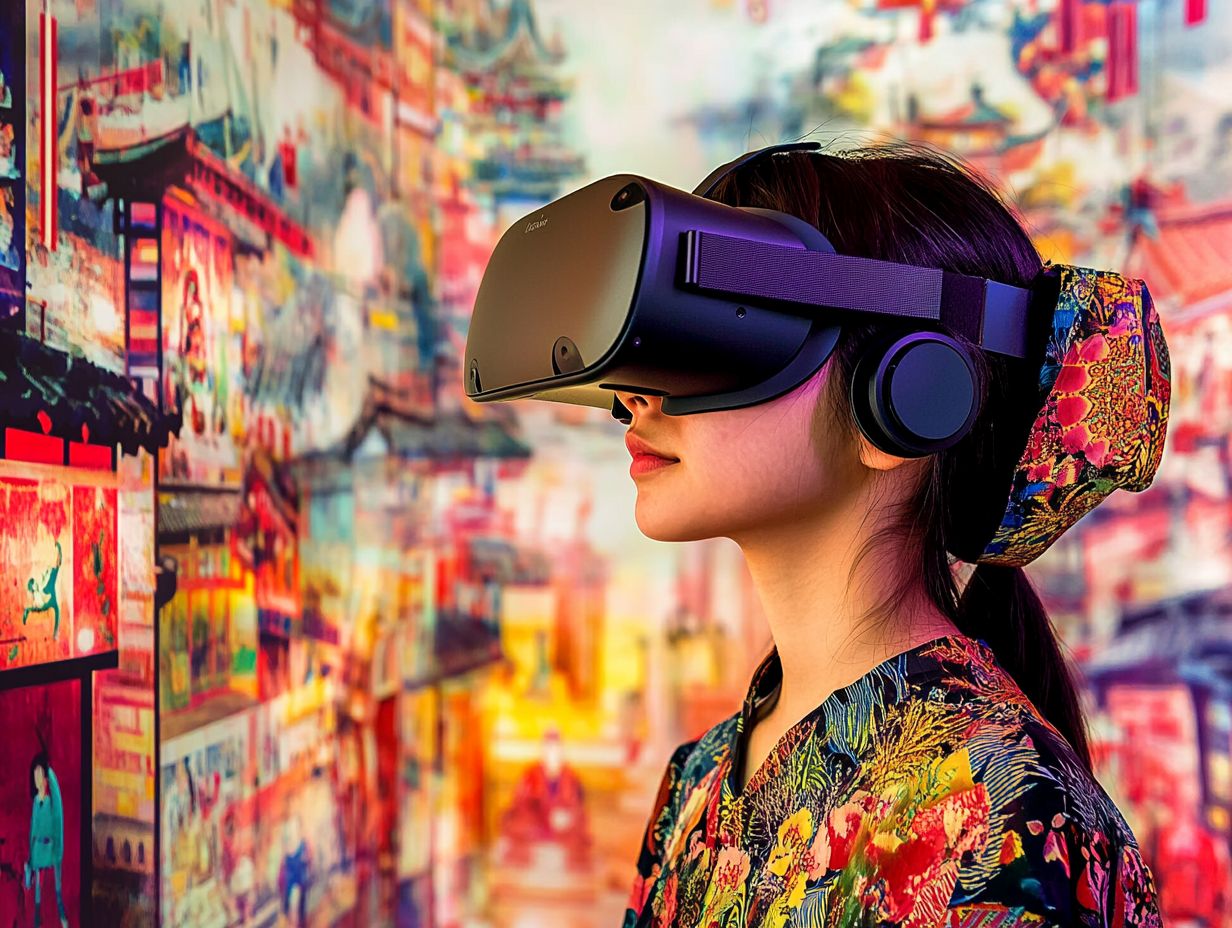
Virtual reality offers a multi-sensory learning experience. Learners engage with the language using visual, auditory, and kinesthetic means, benefiting from language learning games that enhance their skills.
Can virtual reality be used for all languages?
Yes, virtual reality can be used for any language. It provides an immersive learning experience for all learners, whether they are studying widely spoken or less common languages.
What types of language skills can be developed through virtual reality?
Virtual reality helps develop listening, speaking, reading, and writing skills. It also improves pronunciation, vocabulary, and grammar.
Are there any specific language learning programs that use virtual reality?
Absolutely! Many exciting language learning programs use virtual reality, like Rosetta Stone and Babbel. They offer a diverse range of languages and levels that make learning fun and engaging.
Can virtual reality be used as a replacement for traditional language learning methods?
Virtual reality is a valuable supplement to traditional methods. It should be used alongside other techniques for a well-rounded and effective learning experience.
